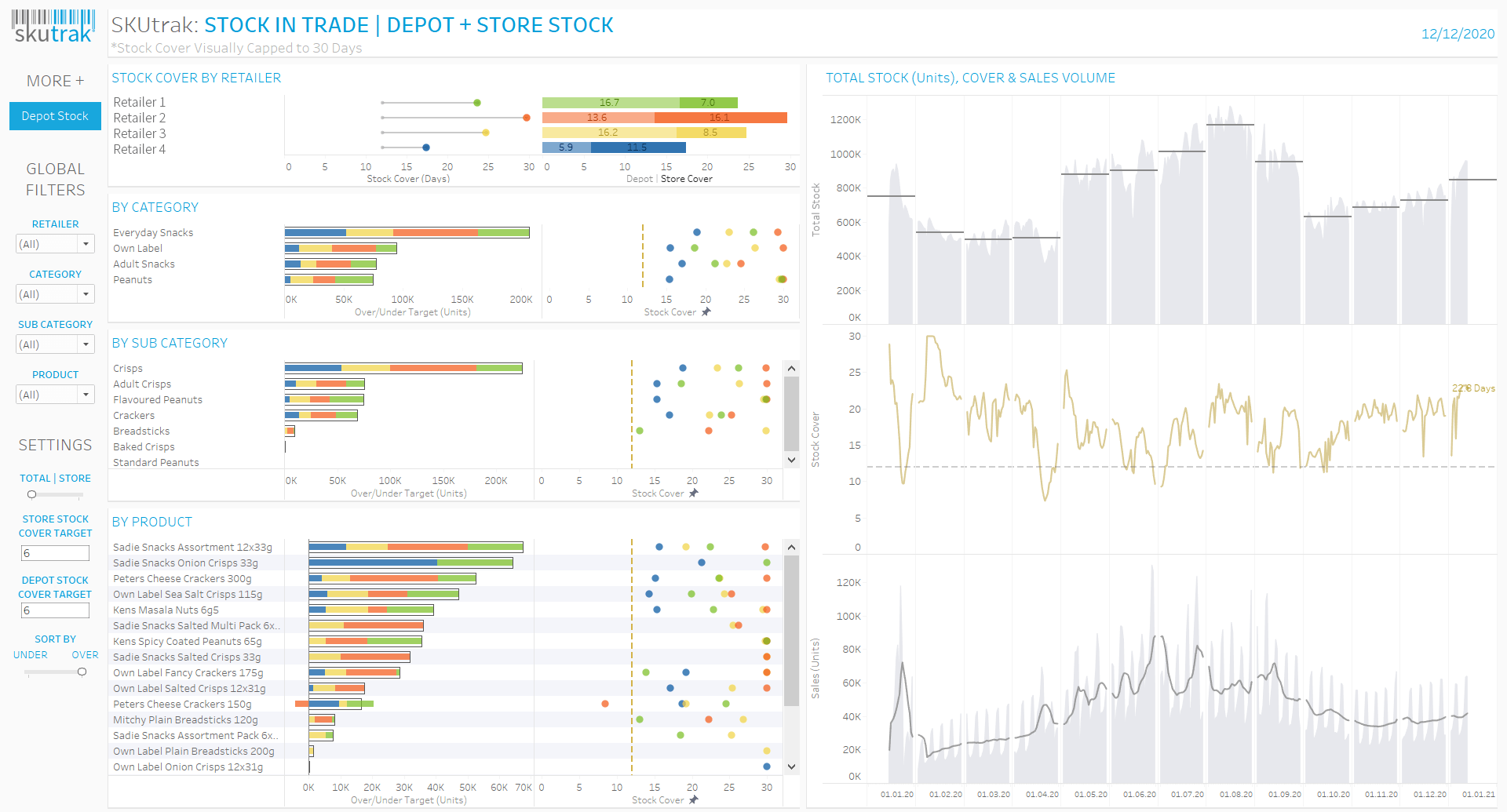Retail’s Urgency: Addressing Customer and Inventory Needs with Data
Retail’s roadmap from being product-driven to more customer-centric shortened significantly in recent years, influenced by increasing omni-channel initiatives that encourage digital transformation.
According to McKinsey & Company, companies accelerated their digital transformation by seven years. Tableau moved quickly to ensure that our customer had the innovative shipping and shopping options to meet customers anywhere they were in the buying process. Digital commerce yielded more customer data than ever before and it needed to be standardized, visualized and acted upon. According to Salesforce, a new global record was hit in 2022 on Black Friday for digital revenue with over $65B in online spend.
Enable your organization to address the top customer and inventory needs by activating your data in Tableau. Visualizing data will address common but nagging issues like in-stock position and product availability, online customer journey, competitive pricing, supply chain optimization, and loyalty program analysis, among others.
Let’s explore visual analyses that reveal critical inventory and customer location insights, which lead to better site location and marketing opportunities.
On-Shelf Availability Dashboards
Empty shelves and low inventory continue to be too common, posing problems for both stores and customers. Tableau’s dashboards can connect inventory and availability to grocers, suppliers, stores, and warehouses, so the fast-moving consumer goods (FMCG) industry can act to eliminate out-of-stocks. Here’s to more availability of the brand consumers expect to see on the shelves!

“Stock in Trade” Dashboard
This visual analysis created by Tableau partner, Atheon Analytics, helps retailers and their suppliers quickly and easily see where inventory is under- or over-stocked by grocer and store location. As a supplier, further examine product availability in warehouses (depots in the UK) to know where stock must be allocated, ensuring availability at certain stores. Unifying retailers, suppliers, and manufacturers around this near real-time data is essential going forward to support constantly changing customer demands.
In the next example, see the product data, category, or sub-category rolled up to the individual grocer. Visualized on the right is current demand compared with stock levels, so you know when you are approaching dangerously low or no inventory to support customers.

Atheon Analytics brings together this critical information from suppliers and retailers in Snowflake to effectively work from one operational canvas and act in unison.
Customer Location and Site Selection Dashboards
Retailers should take a fresh, on-going look at current customer location data and competitors to quickly and confidently know the changing dynamics of their local markets and how customer composition changes throughout the day.
Leading that charge is Tableau partner, Lovelytics, which created a “Customer Location and Site Selection” dashboard, powered by global location provider, Foursquare. It analyzes the Foursquare Visits data feed using geospatial analysis, offers an option to add your own customer demographics and traffic data, and enables businesses to pinpoint an optimal site for opening or where to use an existing location, helping inform customer marketing and targeting.
Evaluate via spatial analysis the number of visitors, the amount of foot traffic, and how the flow of customers changes. This information could easily be combined with real-time sales and loyalty data, and allow for restaurants, in this example, to use CRM Analytics for creating a churn analysis, predicting customers they may lose, and knowing when to activate a new retention campaign within Salesforce Marketing Cloud.
This location view specifically analyzes more than 1.3 million site visits to various restaurant chains in the Denver, Colorado area with the option to look closely by store location, day, and hour. In Tableau, it is easy to “playback” how local areas are changing and how that impacts existing stores. It is also an incredible way to ensure new site selection won’t cannibalize existing locations and that you allocate the correct labor to offer a safe, high-quality experience for customers.
Benefits of inventory and customer clarity for retail
Demystifying inventory availability and ensuring grocers, suppliers, and warehouses (or depots) are aligned ensures that the right inventory gets to the right stores as customer demands and traffic change on a dime. This same data can help remove the guesswork with new store construction builds or help prioritize remodels.
Resources:
- To learn more about how you can power retail success with Tableau and the Salesforce ecosystem, visit us on January 15-17, 2023 in New York City for NRF. Click here to learn more about NRF 2023.
- Join over 3,500 retail and consumer goods customers to discuss and talk about retail analytics, ask questions, and provide help. Be Part of the conversation.
About the Partners: We want to thank Atheon Analytics and Lovelytics for their participation. To learn more about these incredible examples featured, please connect with them.
Note: Jeff Huckaby contributed to the original article.



